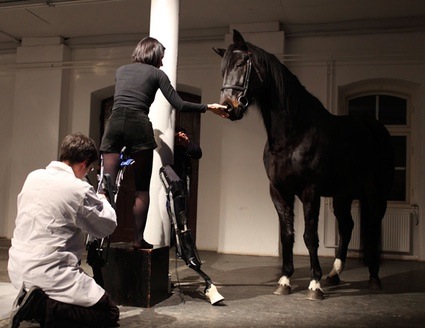 Art Orienté objet, Que le cheval vive en moi, 2011. Photo: Miha Fras
Art Orienté objet, Que le cheval vive en moi, 2011. Photo: Miha Fras
The Casino de Luxembourg has, once again, put up an show worth a trip to the capital of the tiny Grand Duchy of Luxembourg. Second Lives: Jeux masqués et autres Je raises questions about the blurring of identity in contemporary society. I’ll review the whole exhibition later on this week but in the meantime i’d like to single out a work i found particularly striking.
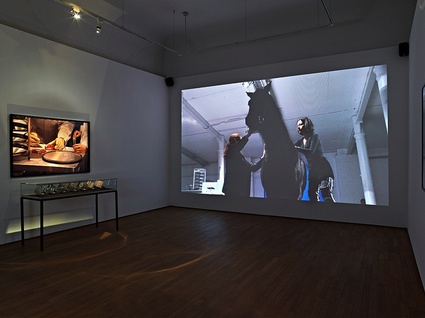 Art Orienté objet, Que le cheval vive en moi, 2011. Vue d’installation. Photo: Studio Rémi Villaggi, Metz pour Casino de Luxembourg – Forum d’art contemporain
Art Orienté objet, Que le cheval vive en moi, 2011. Vue d’installation. Photo: Studio Rémi Villaggi, Metz pour Casino de Luxembourg – Forum d’art contemporain
In February of this year, Art Orienté objet (Marion Laval-Jeantet & Benoît Mangin) were at galerie Kapelica in Ljubljana to perform Que le cheval vive en moi (May the horse live in me), a bold self-experiment that aimed to blur the boundaries between species.
The French artistic duo has been exploring trans-species relationships and the questioning of scientific methods and tools for 20 years now. This time their work involved injecting Marion Laval-Jeantet with horse blood plasma. Over the course of several months, the artist prepared her body by allowing to be injected with horse immunoglobulins, the glycoproteins that circulate in the blood serum, and which, for example, can function as antibodies in immune response. The artist called the process “mithridatization“, after Mithridates VI of Pontus who cultivated an immunity to poisons by regularly ingesting sub-lethal doses of the same.
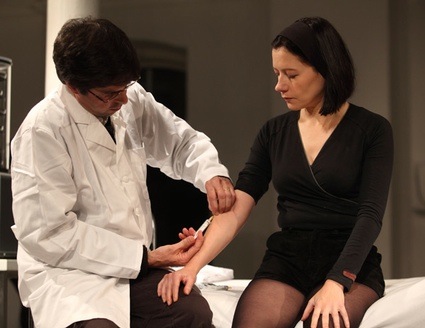 Art Orienté objet, Que le cheval vive en moi, 2011. Photo: Miha Fras
Art Orienté objet, Que le cheval vive en moi, 2011. Photo: Miha Fras
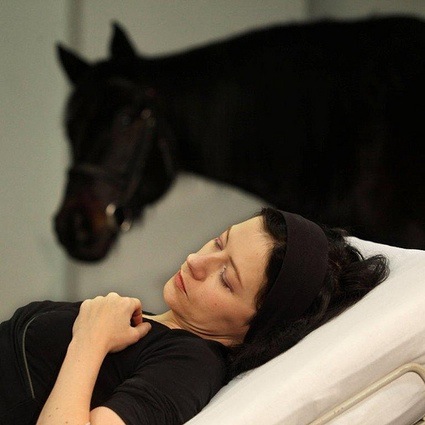 Art Orienté objet, Que le cheval vive en moi, 2011. Photo: Miha Fras
Art Orienté objet, Que le cheval vive en moi, 2011. Photo: Miha Fras
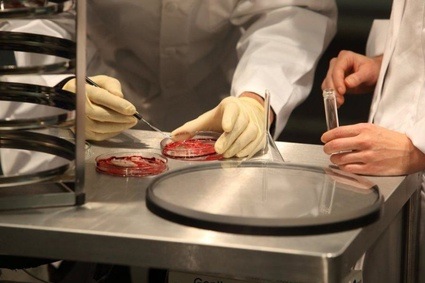 Art Orienté objet, Que le cheval vive en moi, 2011 (image)
Art Orienté objet, Que le cheval vive en moi, 2011 (image)
In February 2011, having progressively built up her tolerance to the foreign animal bodies, she was injected with horse blood plasma containing the entire spectrum of foreign immunoglobulins, without falling into anaphylactic shock, an acute multi-system allergic reaction.
Horse immunoglobulins by-passed the defensive mechanisms of her own human immune system, entered her blood stream to bond with the proteins of her own body and, as a result of this synthesis, have an effect on all major body functions, impacting even the nervous system, so that the artist, during and in the weeks after the performance, experienced not only alterations in her physiological rhythm but also of her consciousness. “I had the feeling of being extra-human,” explained the artist. “I was not in my usual body. I was hyper-powerful, hyper-sensitive, hyper-nervous and very diffident. The emotionalism of an herbivore. I could not sleep. I probably felt a bit like a horse.’
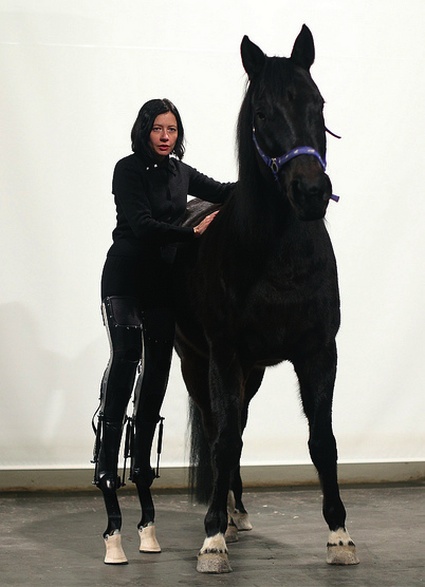 Art Orienté objet, Que le cheval vive en moi, 2011. Photo: Miha Fras
Art Orienté objet, Que le cheval vive en moi, 2011. Photo: Miha Fras
After the transfusion, Laval-Jeantet, perched on stilts, performed a communication ritual with a horse before her hybrid blood was extracted and freeze-dried.
Video documenting the performance:
As a radical experiment whose long-term effects cannot be calculated, Que le cheval vive en moi questions the anthropocentric attitude inherent to our technological understanding. Instead of trying to attain “homeostasis,” a state of physiological balance, with this performance, the artists sought to initiate a process of “synthetic transi-stasis,” in which the only constant is continual transformation and adaptation. The performance represents a continuation of the centaur myth, that human-horse hybrid which, as “animal in human,” symbolizes the antithesis of the rider, who as human dominates the animal.
The work was awarded the Golden Nica at the Prix Ars Electronica 2011.
Previously: Interview with Art Orienté objet.
Second Lives: Jeux masqués et autres Je remains open at the Casino de Luxembourg – Forum d’art contemporain through September 11, 2011.
